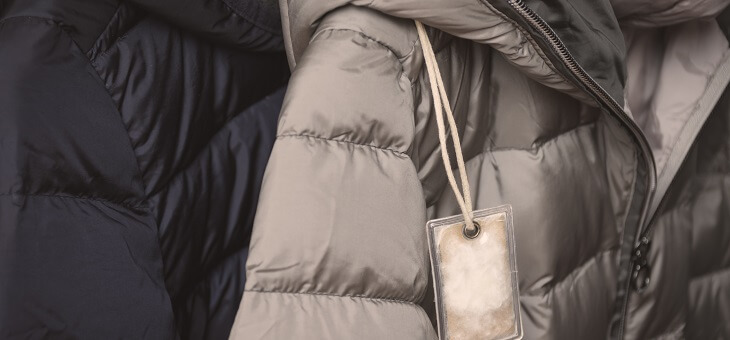On the slopes of Mount Everest 100 years ago, George Finch, from Orange in the central west of New South Wales, revealed his latest invention to his fellow adventurers.
“Finch, who had a scientific brain, invented a wonderful green quilted eiderdown suit of aeroplane fabric. Not a particle of wind could get through,” wrote expedition photographer John Noel.
What the photographer had witnessed was the birth of the puffer jacket.
Today, jackets lined with duck down or a synthetic alternative are some of the most popular and common items of winter clothing out there.
They’re everywhere, from the streets of Hobart to the Met Gala in New York.
But in 1922, Finch’s bright green coat – made from the skin of a hot air balloon and stuffed with eiderdown – drew sneers from the English climbers in his group.
Wearing anything other than jumpers, scarves and Tweed was seen as unfair and un-British.
“They have contrived the most wonderful apparatus that will make you die of laughing,” wrote one.
“I always knew the fellow was a shit,” remarked another.
Later on, high in the Himalayas when everyone else was freezing in their Tweed, Finch wrote: “Everybody now envying … my eiderdown coat, and it is no longer laughed at.”
It’s what’s on the inside that counts
Finch was ahead of his time, but he understood the power of duck down.
“When you think about the ducks that are flying along at 100 miles an hour and they drop down into that freezing cold water, it’s the down, the insulation, that keeps them from freezing to death,” said Jeff Sadler, from The Quilt and Pillow Factory in Hobart.
It’s those tiny feathers that form a thin layer on the underside of the bird that can keep a person alive on Everest.
“And it’s so light! Being a bird of flight, it needs to be aerodynamic as well.”
Other natural fibres keep you warm, but as Mr Sadler explained, none fill a jacket or quilt and wrap around you in the way that down does.
“With wool or synthetics, they’re usually laid in a mat,” he said.
“So they lay over you, instead of snuggling around you.”
If cared for, good quality duck down doesn’t lose its fluffiness.
The Quilt and Pillow Factory has been cleaning and repairing the same down products for more than 20 years.
“It’s the only product you can bring back to its original state,” Mr Sadler said.
Not just for the rich
For much of the 20th century, puffer jackets were worn only by polar explorers and mountaineers.
“It used to be quite an elitist item of clothing that was quite expensive,” said Kathmandu chief Reuben Casey.
“I think as production has improved in Asia and other places, it’s become quite accessible to people.”
Once in reach of the average person, they realised just how good they are.
“You can pack it up when you’re travelling to a cold climate, pull it out of your bag and away you go,” Mr Casey said.
“It keeps you warm when you’re watching the footy, or the kids play sport, or you’re out for a walk.
“It’s just a staple of everyday life now.”
The black puffer jacket has been big business for Kathmandu, particularly over the past 10 years.
“We’ve had a lot of success with the black puffer jacket,” Mr Casey said.
“It’s what we’re famous for, what we’re known for.”
But with success comes competition, and there are now dozens of brands on the market.
That has led to increased demand for down, and animal welfare groups have raised concerns about how that demand is met.
Of particular concern is the reported live-plucking of ducks by some suppliers, particularly in Asia.
Mr Casey said his company did not use live-plucked down and sourced their fibres from birds destined for the meat market.
“One hundred per cent of our down is responsibly sourced,” he said.
“It’s not as if we produce down specifically for the jackets – it’s a by-product.
“As long as that [duck meat] stays popular, there will be a lot of down produced.”
A rising tide of alternatives
Many of the big brands now offer synthetic alternatives to down jackets.
While these have some advantages, such as being more water-resistant, they are often expensive, heavy, and do not offer the same warmth.
“They are improving, and there are some very good ones out there,” explained Barbara Matthews, from Recycled Recreation.
“I would think that down is here to stay, and you can’t really beat that, but there are definitely ethical concerns.
“In the old days, every piece of equipment you got was good quality, but now it’s a lot harder to source and it’s very expensive.”
For those worried about how their jacket is made, she recommended avoiding cheaper products, which were more likely to use low-grade, unethical down.
Otherwise, there’s recycling.
“So, getting second-hand product is great. Obviously learning how to care for it properly, cleaning it, washing it, patching it if it gets holes.”
If looked after, Ms Matthews said there was no reason why a puffer, based on Finch’s design, will not still be around in another 100 years.
 © 2020 Australian Broadcasting Corporation. All rights reserved.
© 2020 Australian Broadcasting Corporation. All rights reserved.
ABC Content Disclaimer

